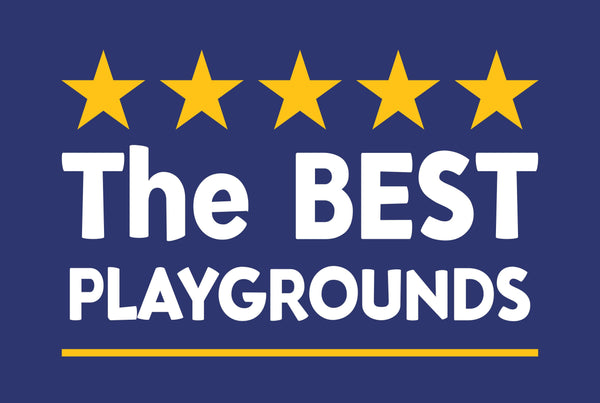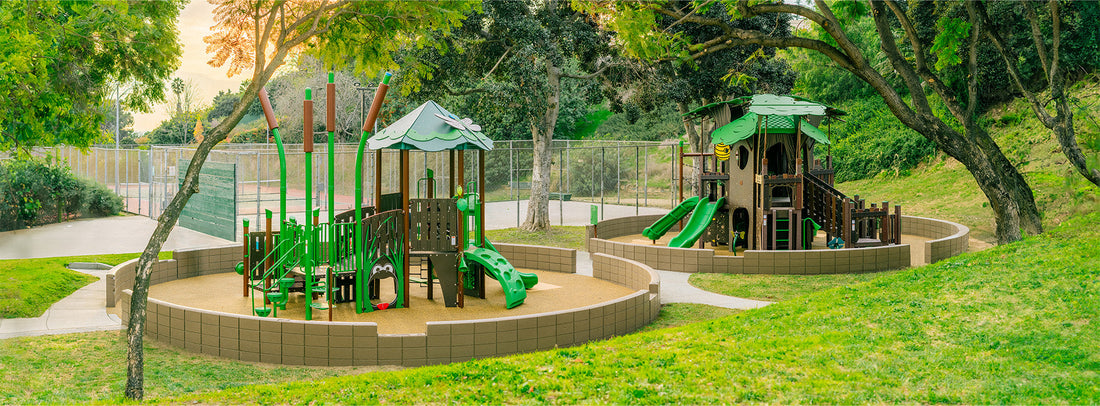Remember the thrill of hearing the recess bell and sprinting outside? That burst of excitement wasn’t just about escaping the classroom—it was about freedom, movement, and connection.
Outdoor playgrounds are more than places to burn off energy—they’re vital spaces for development. Recess is the only time during the school day when kids are truly in control of their own bodies, choices, and fun. Every slide climbed and game of tag played teaches kids how to grow, adapt, and thrive.
Let’s explore how playgrounds turn a simple break into one of the most powerful parts of a child’s day.
1. Recess Reboot: Why Kids Need a Break from the Indoors
Children spend hours indoors under fluorescent lights, focused on lessons and learning outcomes. But their brains need breaks to reset and absorb all that information.
Outdoor recess gives kids a breath of fresh air—literally and figuratively. It’s a chance to shake off restlessness, stretch their legs, and come back inside with a clearer mind. It’s not wasted time—it’s recovery time that helps boost mood, attention, and overall well-being.
2. The Freedom to Move: Physical Play That Doesn’t Feel Like Exercise
Playgrounds naturally encourage movement—no gym class or coaching required. Kids climb, run, spin, and swing without ever realizing they’re strengthening muscles, improving balance, or building coordination.
Unlike structured sports or PE lessons, outdoor play is driven by kids themselves. They move at their own pace, try what feels exciting, and develop confidence in their own abilities. The best part? It doesn’t feel like exercise—it just feels like fun.
3. Social Skills in Action: Where Friendships Are Made (and Tested)
Playgrounds are one of the few places during the school day where kids get to choose who they spend time with and how they interact. Whether they’re teaming up in a game or figuring out how to take turns on the slide, they’re building social skills that no textbook can teach.
There are challenges, of course—hurt feelings, disagreements, and the occasional squabble. But these moments are just as important as the joyful ones. They’re learning how to speak up, compromise, and stand their ground.
4. Letting Off Steam: A Natural Stress Reliever
Kids may not have work deadlines or bills to pay, but they still carry stress—academic pressure, social dynamics, even just the challenge of growing up. Recess provides a healthy outlet for all that tension.
Running around a playground is a release valve. The open space, the fresh air, the playful freedom—it all adds up to better emotional regulation and happier kids once they head back inside.
5. Fueling Imagination: Creative Play Beyond the Curriculum
There are no scripts on a playground. A ladder becomes a pirate ship mast. The swings turn into rockets. The sandbox? A secret kingdom waiting to be discovered.
Outdoor play feeds creativity in a way structured classroom activities can’t. It’s messy, spontaneous, and child-led—exactly how imagination grows best. That kind of freedom helps kids become confident storytellers, problem solvers, and creators.
6. Recess Builds Routine—and That Builds Resilience
In a school day packed with instruction and rules, recess offers just the right dose of independence. It’s a dependable routine that kids look forward to—and that small pocket of control goes a long way in developing resilience.
They get to decide what to do, who to play with, and how to spend their time. That sense of autonomy—even if just for 20 minutes—teaches kids to manage their emotions, face challenges, and bounce back after setbacks.
Conclusion: The Playground Is Where the Real Learning Happens
Recess isn’t a luxury—it’s a lifeline. Outdoor playgrounds create space for the kind of learning that can’t happen in desks or rows. They build not just stronger muscles but stronger minds, hearts, and communities.
So let them run. Let them imagine. Let them be wild and free—because outside, on the playground, is where childhood truly comes alive.

